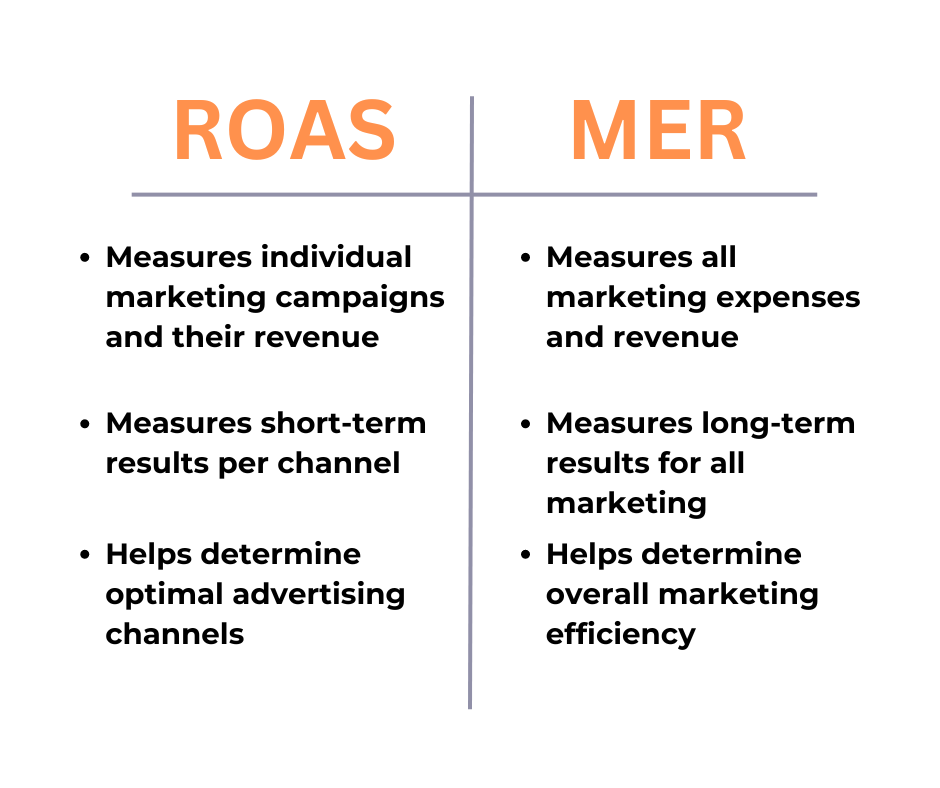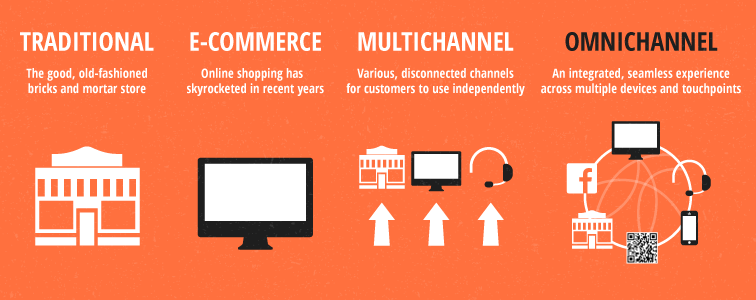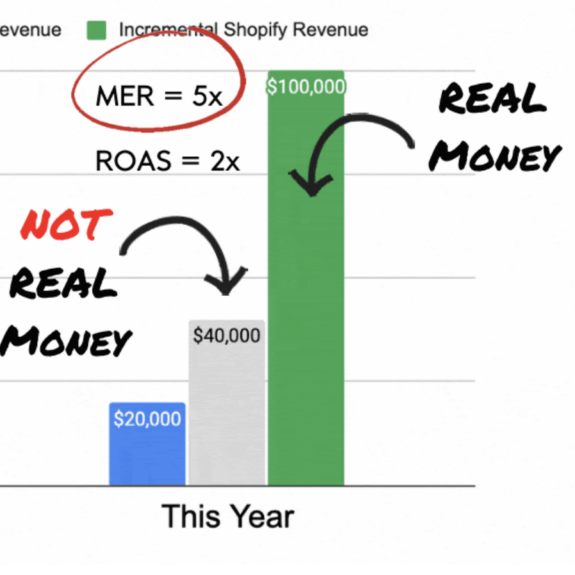Ah, the age-old question: Which should I pay attention to: MER or ROAS? It’s a next-level marketing question that we get asked a lot, and it’s time we broke it down for marketers itching to know how to use each of them.
Marketing Efficiency Ratio (MER) and Return on Ad Spend (ROAS) are both crucial for optimizing your paid media marketing strategy, but they each have distinct points of view. However, taken at face value, they can look similar, which is why people often get confused.
This post is all about helping clear the air between MER and ROAS, what these metrics are, how they differ, and when to use each to make data-driven decisions that enhance your overall marketing efforts.
Let’s get started.
Key Highlights on MER vs. ROAS
- MER (Marketing Efficiency Ratio) evaluates overall marketing efficiency by comparing total revenue to total marketing spend, providing a holistic view across all channels.
- ROAS (Return on Ad Spend) measures the revenue generated per dollar spent on a specific campaign, emphasizing short-term performance.
- While MER supports long-term planning and strategic adjustments, ROAS aids in refining individual campaigns.
- Using both metrics together helps balance immediate ROI with overall marketing productivity, optimizing ad spend across campaigns and channels.
TABLE OF CONTENTS:
MER and ROAS Explained
Modern marketing success strongly depends on precise measurement and optimization of marketing efforts. While there are plenty of metrics and calculations marketers will use to derive the efficacy of their marketing, we all know, in the end, that they need to point toward driving revenue.
That’s where ROAS and MER tend to be the “be-all-end-all” metrics we consider most heavily. ROAS and MER will typically give a succinct perspective of overall marketing performance, helping you understand the effectiveness of your advertising campaigns. It’s all so you can make informed strategic decisions based on what you have already executed.
Here’s a simple breakdown of MER vs ROAS:
MER
Marketing Efficiency Ratio (sometimes called “Media Efficiency Ratio”) evaluates overall campaign efficiency by measuring the total revenue generated from all marketing efforts against the company’s total marketing expenses, which includes marketing costs.
This provides a comprehensive overview of a company’s marketing efficiency in every channel and placement. It encompasses all revenue and costs rather than being limited to specific campaigns. Think of it as the highest-level metric related to marketing performance.
ROAS
Return on Ad Spend (ROAS) focuses on the immediate revenue generated for each dollar spent on a specific campaign, emphasizing short-term performance and profitability per dollar spent. Gaining expertise in these metrics enables businesses to balance immediate marketing success and sustained revenue growth. Think of this as more of a concentrated metric focusing on one channel or campaign.
Key Takeaway:
To maximize marketing investments, businesses should consider ROAS and MER perspectives. Looking at ROAS will help gauge the efficiency of a single campaign, while MER will gauge the overall health of marketing as a whole. Both are crucial for optimizing advertising strategies, but each serves different purposes.
Calculating Marketing Efficiency Ratio (MER)
The Marketing Efficiency Ratio (MER) assesses the cost-effectiveness of marketing campaigns by comparing the total of all media spending to all revenue generated from marketing. It is not limited to specific campaigns like ROAS.
MER is calculated by dividing the total revenue generated by advertising by the total spend on advertising amongst all channels:

This simple yet powerful equation helps businesses understand whether their marketing investments are paying off at large. A high MER indicates a more efficient marketing strategy, while a low MER suggests the need for reassessment and optimization.
MER helps businesses gain a comprehensive view of their marketing efforts. This includes activities that may not result in immediate sales, but are vital for long-term success.
Unlike ROAS, which focuses on specific campaigns, MER aggregates all sales generated across various channels, and advertising platforms, providing a more comprehensive view of marketing success. This broader perspective helps businesses:
- Identify overall marketing efficiencies
- Optimize resource allocation
- Ensure marketing strategies align with long-term goals
- Facilitate continuous performance improvement
Here’s a quick hypothetical example to illustrate this: a health supplement brand expects $15 million in sales with a gross margin of $12 million and set aside $6 million for marketing, resulting in an MER of 2.5. Notice the $3 million in other costs (made up of COGS, operations, and other expenses) are not factored when calculating MER. We only care about marketing expenses in this instance.
Remember that MER only considers the totality of your marketing efforts, not any other expenses, nor how any single marketing channel performed versus another.
But that’s where measuring ROAS comes into play.
Key Takeaway:
Calculating Return on Ad Spend (ROAS)
Return on Ad Spend (ROAS) is a key metric that quantifies the financial return against the direct cost of a specific advertising campaign. It basically measures the overall efficiency of a single format, campaign, channel, or anything else you decide. This precision makes ROAS an invaluable tool for optimizing ad spend and improving campaign performance in one area (not necessarily every marketing channel).
Calculating ROAS is quite straightforward. Simply divide the revenue from ads of a single channel or campaign by the total ad spend of the same channel or campaign:

ROAS Calculation Example
For example, let’s say you ran paid Facebook ads and spent $3,000 in a month. The campaign generated $6000 in revenue, so the equation would be $6,000/$3,000 = 2. This effectively means your ROAS is a 2:1 ratio, meaning that for every dollar spent on advertising on Facebook, $2 in revenue is generated.
A ROAS above 1 indicates a successful campaign, and the higher it is after that means it’s only more successful. A ROAS below 1 suggests that the advertising campaign is underperforming and may need optimization. This metric is particularly useful for businesses that rely heavily on digital marketing, as it allows for real-time analysis and adjustments.
Here’s another example. Let’s say your business is doing email marketing, social media marketing, influencer marketing, and paid ads. You would want to track the ROAS of each of those four channels separately.
Each of those mediums has its own ecosystem, strategies, and addressable markets, which means they should each be measured on their own. It doesn’t make sense to combine any of them together when comparing ROAS. In this scenario, you would use the above calculation for each channel, taking the total marketing costs and revenue from each campaign to learn the ROAS of each effort.
If your results reveal that email marketing and social media marketing return 2:1 ROAS, paid ads at 3:1, and influencer marketing at 1:1, it signals that your paid ad campaigns are performing best and your influencer program could use a bit more attention.
Key Takeaway:
Need help balancing ROAS and MER? Single Grain’s marketing experts can help!👇
Comparing MER and ROAS
Although both MER and ROAS offer valuable insights into marketing performance, they play different strategic roles. MER helps businesses understand the overall effectiveness of their marketing strategies, including non-sales-related activities such as brand-building and customer engagement.
On the other hand, ROAS focuses on the direct financial return from specific advertising expenses, emphasizing short-term performance and profitability per dollar spent. This metric is transactional and is used to optimize individual campaigns for immediate results. If you combine the insights from both ROAS and MER, your business will have a much more balanced view of its marketing that considers all its aspects.

Key Takeaway:
Advantages of Tracking MER
The biggest advantage of using MER lies in its capability to present a comprehensive view of a company’s marketing efforts.
MER helps businesses understand the aggregate impact of their advertising strategies by considering the total revenue generated from all marketing activities against the overall spend. Another advantage of MER is its ability to offer quick assessments of financial health, particularly for highlighting results to investors and executives as well as for managing a tight cash flow.
Regular MER monitoring allows companies to verify the marketing effectiveness (especially with omnichannel strategies) over time and make any necessary adjustments for performance optimization on a larger scale:

It can highlight the efficacy of identical choices made across multiple campaigns, such as messaging alterations, audience qualification, and other major criteria that might be applied to all branding and advertising placements.
When wide-scale marketing experiments are applied to all channels, MER becomes super useful in evaluating whether one single change made everywhere had an impact in the big picture.
However, it ultimately depends on ROAS measurement to determine which channels reacted the best to any system-wide marketing experiment.
Key Takeaway:
Limitations of MER
Since MER aggregates all marketing efforts, it doesn’t provide detailed insights into which parts of a campaign are most effective or where to invest more resources. This lack of granularity can make it challenging to make specific adjustments to marketing strategies.
Additionally, inaccurate or incomplete data can severely skew MER calculations, leading to misguided decisions and an invalid perception of the true impact of your marketing efforts. For organizations with a mix of online and offline marketing strategies, not capturing all efforts can misrepresent MER calculations.
Furthermore, MER lacks the details required for making smaller adjustments, such as ad tweaks, and doesn’t highlight what to cut if spending needs to be reduced:

Some potential issues with MER calculations include:
- Inaccurate or incomplete data
- Not revealing which specific areas of marketing are working and which aren’t
- Not capturing all marketing efforts accurately
- Lack of marketing campaign details for making smaller adjustments
- Not highlighting what to cut if spending needs to be reduced
- Not measuring the true growth of a business
Because MER only catches the top-level view of all marketing channels, it can only offer so much insight. It can be a handy tool for understanding overall marketing health but not individual campaign effectiveness. To that end, it is not as helpful when trying to drill down on specific areas of strength or weakness.
Key Takeaway:
Advantages of Tracking ROAS
Several benefits are associated with ROAS tracking, such as:
- Pinpointing the most lucrative advertising channels
- Optimizing advertising spend to ensure each dollar expended generates a positive ROI.
- Helping make informed decisions about which campaigns to scale and which to tweak or discontinue.
ROAS also plays a crucial role in fine-tuning individual campaigns and optimizing short-term performance. Where MER looks at the whole picture of total marketing spend, ROAS measures By closely monitoring ROAS, businesses can:
- Uncover trends and opportunities that enhance campaign performance
- Provide concrete data for optimizing budget allocation
- Help businesses focus their resources on the most effective campaigns and achieve better results.
Key Takeaway:
Downsides of ROAS
Although ROAS is a useful metric, it carries its own set of drawbacks and trappings if not treated with a discerning eye.
One major limitation is its focus on short-term revenue, which can overshadow long-term goals.
We see this often with marketers and business leaders who fixate on one particular channel’s ROAS, which derails their attention from everything else.
The moment they notice one thing is performing above expectations, they might steer all of their attention into that one thing, neglecting the rest. On the flipside, they might see one area appears to be performing inadequately at first (based on their ROAS data), and decide to drop that campaign entirely. The key here lies in not letting yourself get carried away (for better or for worse) with one marketing channel based on what the ROAS is telling you right away. Different channels take more or less time to mature to a state where they become profitable.
Just because channel A seems to be working well at first doesn’t mean you should abandon channels B, C, D, and E in favor of pumping more resources into channel A. Over time, you may come to the realization that one or two channels are your star performers. But before then, don’t shoot yourself in the foot by ditching one or more other channels before you’ve given them enough time to reach their full potential.
This is the trap we can easily fall into when acting too quickly on ROAS.
Difficulties in Attributing Offline Marketing
Another downside of ROAS is its difficulty in capturing the impact of non-digital marketing efforts. Since ROAS primarily measures the direct financial return from specific advertising channels, it may provide an incomplete picture of a campaign’s overall effectiveness. This limitation can result in a skewed understanding of digital marketing performance and hinder strategic decision-making.
Key Takeaway:
Factors Influencing MER and ROAS
The effectiveness of ROAS and MER can be influenced by several factors, such as:
- Market scale: The size and potential growth of the industry or sector in a given region.
- Competition level: The intensity and number of businesses vying for market share in the same industry.
- Seasonal variations: The impact of seasonal changes on sales, demand, and consumer activity within a market.
- Evolving consumer behaviors: Shifts in customer preferences, purchasing patterns, and expectations over time.
These factors play a significant role in shaping the outcomes of marketing campaigns and impacting both metrics. Understanding these factors is crucial for accurately assessing marketing efficiency and campaign performance.
Key Takeaway:
Implementing MER and ROAS Together
Simultaneous utilization of MER and ROAS can offer a comprehensive understanding of both overall marketing productivity and channel-specific ROI. To optimize ad spend based on customer lifetime value, businesses can calculate a modified MER that includes post-acquisition revenue over a set period, such as 60 days:

This approach helps in making strategic decisions that enhance long-term profitability. Additionally, understanding the breakeven point for each ad dollar spent on certain campaigns is crucial for optimizing overall marketing spend.
Businesses can identify key metrics and ensure each ad dollar contributes to profit by following a structured approach that encompasses:
- Defining MER (Marketing Efficiency Ratio)
- Segregating new customers
- Calculating acquisition MER
- Comparing blended versus marginal efficiency
This method helps in identifying the most effective strategies and optimizing marketing efforts as part of an overall marketing strategy for better results.
Key Takeaway:
Optimizing Marketing Strategies with MER and ROAS
Identifying underperforming marketing campaigns and channels requires regular monitoring and optimization of ROI, ROAS, and MER. By evaluating each marketing strategy’s impact across the entire customer journey, businesses can allocate their marketing budget more efficiently. Viewing ROAS as a metric that rolls up into MER can help in budget allocation and improve overall marketing performance.
A/B testing different marketing mixes can reveal which strategies yield a higher MER, allowing businesses to optimize their spending. Predictive analytics can also be used with MER to simulate different marketing mix scenarios and optimize outcomes. Businesses can drive long-term marketing success by continuously refining targets and comparing performance to industry standards. This proactive approach helps them stay competitive in the market.
For successful paid social campaigns, it’s imperative to track them during peak seasons. It is crucial to measure beyond ROAS and evaluate the broader impact on brand, customer lifetime value, and overall efficiency through metrics like MER. This comprehensive approach ensures that marketing strategies are aligned with long-term goals and deliver sustainable growth.
Key Takeaway:
Last Thoughts on MER vs ROAS
Both MER and ROAS are vital datapoints businesses should consider. As we’ve discussed, MER provides a bird’s eye view of overall marketing efficiency by assessing the total revenue generated against the total ad spend. ROAS looks at each individual marketing channel’s potency to help understand which channels are worth investing more into. It is particularly useful for understanding the broader impact of marketing efforts, including brand-building activities and customer engagement that may not immediately lead to sales.
With that said, let’s go through a quick rundown of what we covered here:
Key Points
- MER offers a comprehensive view of a company’s gains from marketing by assessing the total revenue generated against the overall marketing spend, making it essential for long-term strategic planning.
- ROAS is crucial for measuring the immediate profitability of specific advertising campaigns, enabling businesses to optimize individual campaigns and ensure short-term financial returns.
- Using both MER and ROAS together provides a balanced approach to marketing strategy, combining short-term campaign performance with overall marketing activities for sustained business growth.
It’s absolutely necessary to look at both metrics together. Stay mindful that these metrics are long-term signals. No immediate, drastic decisions should be made with these results without giving your marketing efforts time to test themselves thoroughly.
If you’re ready to start balancing ROAS and MER, Single Grain’s marketing experts can help!👇
Recommended Video
For more insights and lessons about marketing, check out our Marketing School podcast on YouTube.
MER vs ROAS FAQs
-
What is the Marketing Efficiency Ratio (MER)?
The Marketing Efficiency Ratio (MER) measures the cost-effectiveness of marketing campaigns by comparing total revenue generated from marketing efforts to total ad spend.
-
How is Return on Ad Spend (ROAS) calculated?
ROAS is calculated by dividing the revenue generated from a specific ad campaign by the total cost of that campaign. This helps to measure the effectiveness of the advertising efforts.
-
What are the key differences between MER and ROAS?
The key difference between MER and ROAS is that MER provides an overall view of marketing efficiency, while ROAS concentrates on the specific financial return from advertising campaigns.
-
Why is it important to use both MER and ROAS together?
It is important to use both MER and ROAS together as they help businesses understand the overall marketing efficiency and channel-specific ROI, balancing immediate success with long-term revenue growth.
-
What are the limitations of focusing solely on ROAS?
Focusing solely on ROAS can overshadow long-term goals, neglect brand-building activities, and provide an incomplete picture of campaign performance. It’s important to consider broader business objectives and brand impact, rather than just short-term financial returns.






